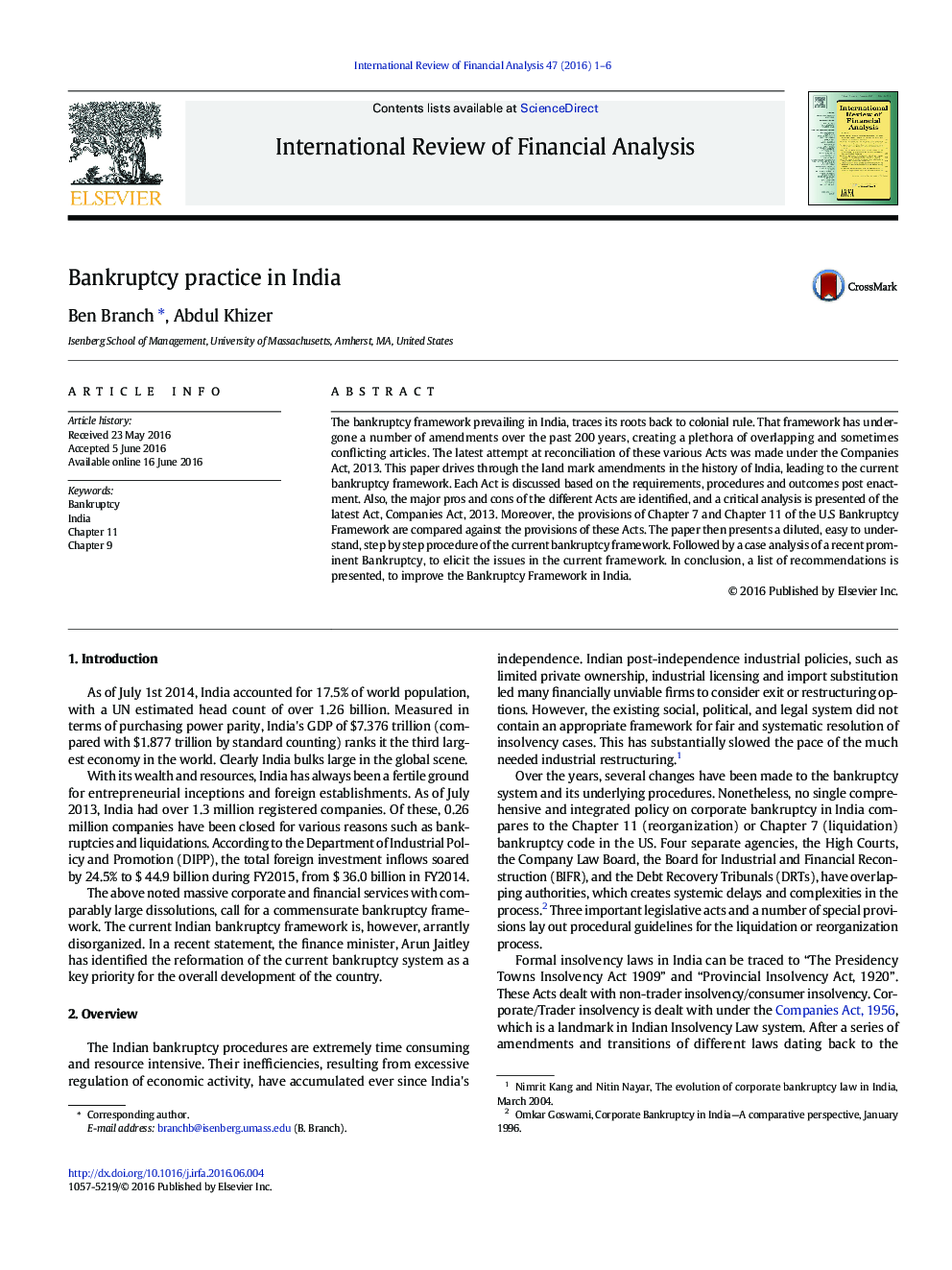| Article ID | Journal | Published Year | Pages | File Type |
|---|---|---|---|---|
| 5084497 | International Review of Financial Analysis | 2016 | 6 Pages |
Abstract
The bankruptcy framework prevailing in India, traces its roots back to colonial rule. That framework has undergone a number of amendments over the past 200Â years, creating a plethora of overlapping and sometimes conflicting articles. The latest attempt at reconciliation of these various Acts was made under the Companies Act, 2013. This paper drives through the land mark amendments in the history of India, leading to the current bankruptcy framework. Each Act is discussed based on the requirements, procedures and outcomes post enactment. Also, the major pros and cons of the different Acts are identified, and a critical analysis is presented of the latest Act, Companies Act, 2013. Moreover, the provisions of Chapter 7 and Chapter 11 of the U.S Bankruptcy Framework are compared against the provisions of these Acts. The paper then presents a diluted, easy to understand, step by step procedure of the current bankruptcy framework. Followed by a case analysis of a recent prominent Bankruptcy, to elicit the issues in the current framework. In conclusion, a list of recommendations is presented, to improve the Bankruptcy Framework in India.
Keywords
Related Topics
Social Sciences and Humanities
Economics, Econometrics and Finance
Economics and Econometrics
Authors
Ben Branch, Abdul Khizer,
